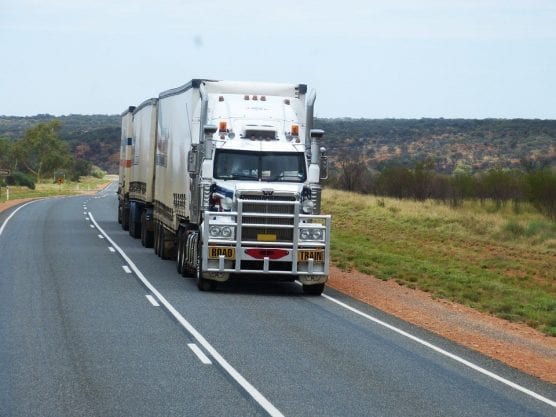SACRAMENTO — Calling for a crackdown of two major contributors to California’s notoriously hazy air, the state is moving forward with stringent new emissions regulations for the shipping and transportation industries.
Aimed at cargo ships and heavy-duty diesel trucks, the California Air Resources Board estimates the new rules will drastically reduce air pollution and prevent over $35 billion in medical costs over the next three decades. The board cast the decision as a win for environmental justice and passed it despite the billions it will cost the industries to implement various new technologies.
“It’s technology-forcing but again we do need to move forward,” said board member Diane Takvorian. “This is an environmental justice regulation, most of the communities surrounding the port are disadvantaged communities.”
Late Thursday, the board expanded existing rules requiring ships docking and idling in California’s ports to reduce emissions by connecting to the local electricity grid and covering exhaust stacks. Container and cruise ships have been under the air quality rules for the last decade but over the next several years the state will phase in auto carriers and oil tankers.
Once fully implemented, supporters say the rules will cut emissions by 90% and greatly reduce the cancer risk for residents living near ports in Los Angeles, Long Beach and Richmond, which are routinely plagued by bad air.
“The tankers are by far the greatest polluter of the vessels we have left,” said board member Hector De La Torre. “We cannot look the other way on the emissions we’re seeing and the pollution.”
Under the rules, auto carriers have until 2025 to comply at all ports. The rules go into effect for oil tankers at Los Angeles and Long Beach in 2025 and in Northern California ports by 2027.
The board claims the new regulations will cost the industry $2.2 billion to implement but says the price tag is “reasonable” and can be recouped through new port fees and likely state grants.
California is also moving forward with tougher smog standards for diesel trucks, which emit nearly one-third of the state’s total nitrogen oxide emissions.
Long in the making, the new standard reduces by 90% the amount of allowable nitrogen oxide emissions from heavy-duty diesel engines by 2027.
The plans are meant to specifically improve air quality in two regions that often experience poor air quality throughout the year. The board says by 2050, the standards could reduce 75 tons of emissions per day in California, including 23 tons in Southern California and 19 tons in the San Joaquin Valley.
Transportation accounts for 50% of California’s greenhouse gas emissions and more than 95% of toxic diesel particulate matter emissions, according to CARB. It also estimates the resulting cleaner air will prevent nearly 4,000 deaths, 1,800 emergency room visits and save $36 billion in health care costs by the year 2050.
The transportation industry blasted the board’s latest decision and accused it of tacking on expensive, unrealistic regulations during a global recession.
In an opposition letter, the Truck and & Engine Manufacturers Association called the rules “cost-prohibitive, infeasible, unenforceable and illegal.”
“Taken alone, the proposed omnibus regulations pose a serious threat to the California heavy-duty truck market,” states the association’s 342-page letter. “They also will have significant adverse impacts on California’s economy, and will cause fleet customers to keep their older trucks longer and defer buying new heavy-duty-on-highway products. As a result, the projected environmental benefits of the low-NOx regulations will be undermined and, likely, never achieved.”
Thursday’s vote comes two months after the board approved the nation’s first electric truck standards. The rules require over half the trucks sold by manufacturers in the state be zero-emission vehicles by 2035.
— By Nick Cahill
Like this:
Like Loading...
Related





 Tweet This
Tweet This Facebook
Facebook Digg This
Digg This Bookmark
Bookmark Stumble
Stumble RSS
RSS


























REAL NAMES ONLY: All posters must use their real individual or business name. This applies equally to Twitter account holders who use a nickname.
0 Comments
You can be the first one to leave a comment.